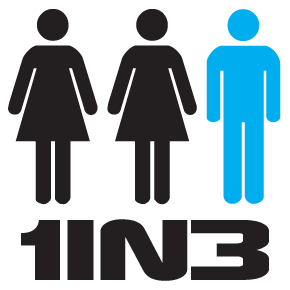Letter published in Sydney Morning Herald
The following letter was published in the Sydney Morning Herald on Saturday 27th April 2013 in response to the article below it.
NSW Rape Crisis Centre executive officer Karen Willis repeats the discredited claim that domestic violence is about masculinity ("Mosman woman's death puts spotlight on domestic violence", April 26).
Research shows domestic violence is most prevalent among young people and is linked to social disadvantage, drug and alcohol abuse, mental health issues, and inadequate conflict management and emotional regulation skills. "Masculinity" simply cannot account for the one in three reported victims of domestic assault in NSW who are male, nor the one in five offenders who are female. We won't reduce domestic violence rates by incorrectly identifying the causes.
Greg Andresen senior researcher, One in Three Campaign
Mosman woman's death puts spotlight on domestic violence
It was the horrific end to an already terrible tale. The death of 32-year-old Mosman resident Kate Malonyay was followed a few days later by her ex-boyfriend Elliott Coulson plunging to his death from a Gold Coast hotel. NSW police are still investigating the circumstances surrounding both deaths.
A police officer was reportedly present when Mr Coulson fell to his death from the hotel's 26th floor, and attempted to grab the man's arm before he fell.
Ms Malonyay also reportedly called police this year after a domestic incident. Friends who spoke to Fairfax Media did not believe she had been hurt previously, but questions have been raised about the nature of their volatile relationship that ended at Christmas.
Statistics show a victim is often attacked by the person closest to them, with 43 per cent of the 115 females and 100 males killed in domestic homicides in NSW between 2003 and 2008 attacked by their partner.
Over three-quarters of offenders in all domestic homicides were male, the NSW Bureau of Crime Statistics and Research report showed. In 2010, almost half of all domestic assaults were inflicted by a man on his female partner.
NSW Rape Crisis Centre executive officer Karen Willis said in incidents of domestic violence people often ask "why doesn't she leave?" but the question should really be "why doesn't he stop?"
"It's about masculinity and how men make meaning of themselves and their lives and their role and position," Ms Willis said. "The majority of men do that in non-violent and excellent ways. What they need to do is encourage the minority to step up to the mark."
Ms Willis said it was often psychological dominance that made it difficult for victims to see a way to escape abuse.
"The message needs to be: domestic violence is unacceptable, the offender is responsible. The offender's behaviour is wrong here."
The statistics showed domestic assaults and homicides have been relatively stable since 2003, while non-domestic assaults, murders and killings declined.
Ms Willis said the stability in the rates of the domestic crimes showed there was more to be done, in particular making communication between agencies like police and health and welfare services much easier.
Minister for Women Pru Goward said the government was developing a domestic violence framework that would address privacy laws to make communication between agencies more effective. Police now issue their own apprehended domestic violence orders, which Ms Goward said would make a difference.
"We are increasingly focused on getting women to stick with their court process and have men charged with assault."
Domestic violence line: 1800 65 64 63
Lifeline: 131 114

